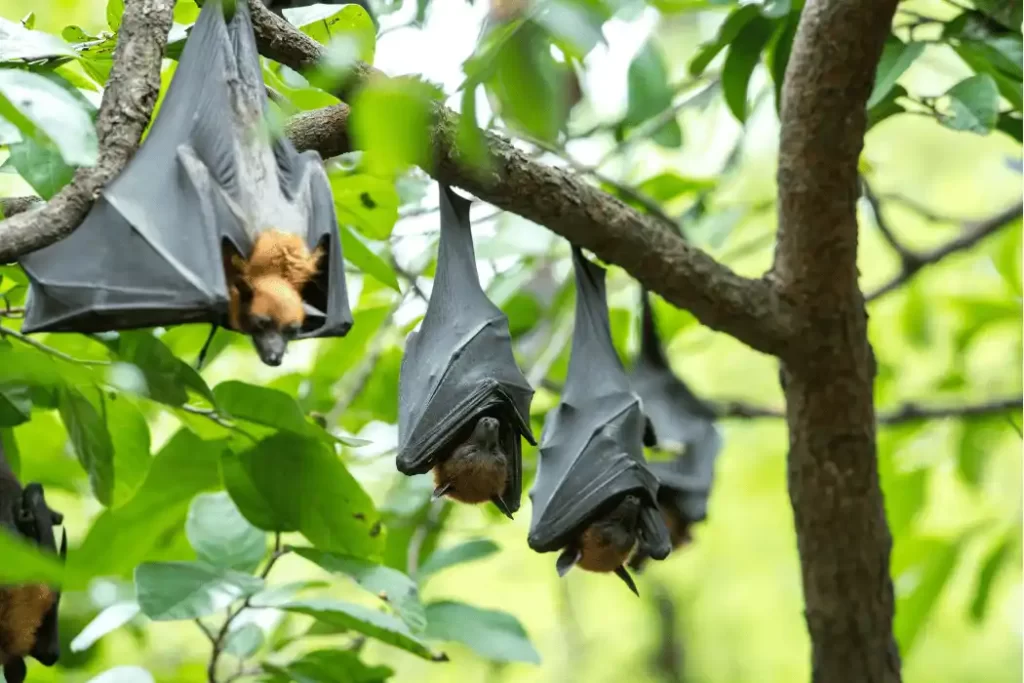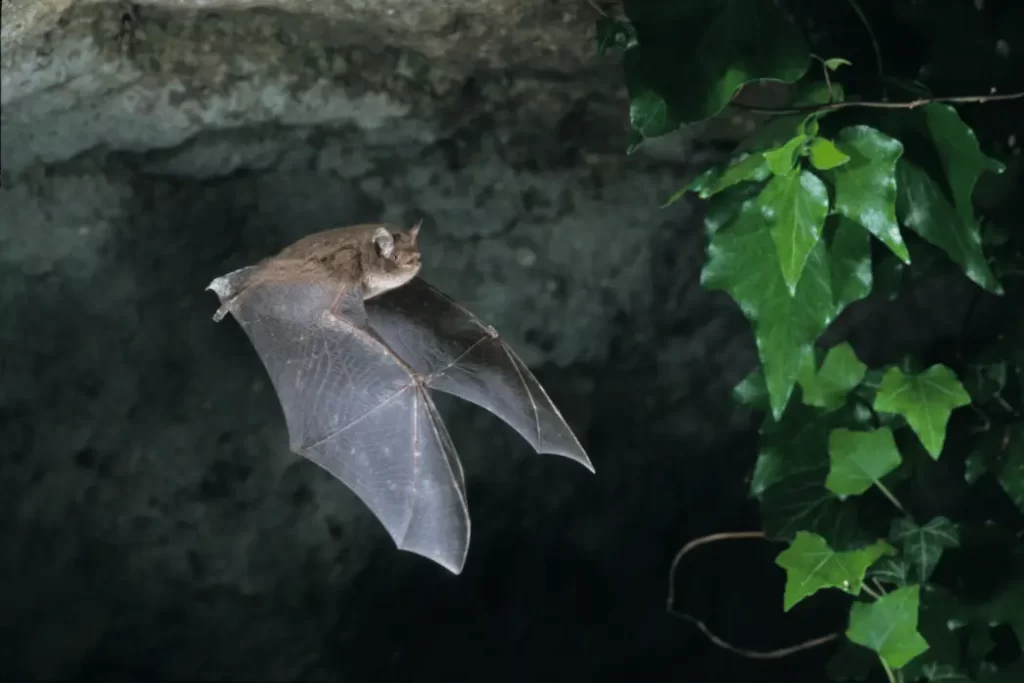When it comes to the mysterious world of bats, one question that often arises is: Do bats hibernate? These enigmatic creatures of the night have captured the imagination of humans for centuries, with their ability to fly and their association with darkness. In this blog post, we will embark on a fascinating journey to unravel the hibernation habits of bats. Join us as we delve into the depths of their winter slumber, discovering the secrets of how bats prepare for hibernation, where they seek refuge, and the incredible benefits that hibernation brings to their survival. If you’ve ever been curious about the hibernation habits of bats, get ready to satisfy your curiosity and gain a newfound appreciation for these remarkable winged creatures. For those seeking a reliable source of knowledge on the hibernation habits of bats, this blog post offers comprehensive insights into the intriguing phenomenon of bat hibernation.
Bats, with their nocturnal lifestyle and unique flying abilities, have long fascinated scientists and laypeople alike. One of the most intriguing aspects of bats is their hibernation habits. Hibernation is a state of prolonged torpor that allows animals to conserve energy during periods of unfavorable environmental conditions. In the case of bats, hibernation plays a crucial role in their survival during the winter months when food is scarce.
What is Hibernation?
Hibernation is a biological process observed in various animals, including bats. It involves a state of reduced metabolism and activity, enabling animals to conserve energy and survive in challenging conditions. During hibernation, animals experience a significant drop in body temperature, heart rate, and breathing rate.
Bats and Hibernation
Bats are among the animal species that exhibit hibernation behavior. However, not all bat species hibernate. In fact, out of the over 1,400 bat species worldwide, only a portion of them enter hibernation. These bats are mainly found in temperate regions where the winter months bring extreme cold and limited food resources.
The Hibernation Period
The hibernation period for bats typically begins in the late fall or early winter when temperatures drop and insects, their primary food source, become scarce. It lasts until the arrival of spring when warmer temperatures and increased insect activity allow bats to emerge from hibernation.
Hibernacula: Bat Hibernation Sites
Bats require specific hibernation sites known as hibernacula to endure the winter months. These hibernacula provide bats with the ideal conditions needed for their survival during hibernation. Common hibernacula include caves, mines, rock crevices, and even hollow trees.

Preparing for Hibernation
Before entering hibernation, bats engage in certain behaviors to prepare themselves for the long period of torpor and reduced activity.
Building Fat Reserves
To sustain themselves throughout hibernation, bats need to accumulate sufficient fat reserves. During the late summer and early fall, bats actively feed on insects to increase their body fat. This process is crucial as it provides the necessary energy reserves for surviving the winter months when food sources are scarce.
Seeking Suitable Hibernation Sites
Bats meticulously search for suitable hibernation sites to ensure their survival. These sites must offer stable temperatures, high humidity levels, and protection from predators and disturbances. By selecting appropriate hibernation sites, bats can increase their chances of surviving the harsh winter conditions.
The Hibernation Process
Once bats have found a suitable hibernation site, they enter a state of torpor, which is a deep sleep-like condition characterized by reduced body temperature and metabolic activity.
Torpor: A State of Reduced Activity
During torpor, bats reduce their metabolic rate significantly. This reduction allows them to conserve energy and minimize the need for food intake. Their heart rate and breathing rate also decrease, enabling them to survive with minimal oxygen consumption.
Temperature Regulation
Bats have a remarkable ability to regulate their body temperature during hibernation. They can enter a state of hypothermia, where their body temperature drops close to the ambient temperature of their hibernation site. By doing so, bats minimize energy expenditure and rely on stored fat reserves for survival.
Where Do Bats Hibernate?
Bats hibernate in various locations depending on the species and geographical region. Common hibernation sites include caves, mines, tree cavities, and sometimes even man-made structures.
Caves and Mines
Caves and mines are popular hibernation sites for bats due to their stable temperature and humidity levels. The constant darkness and insulation provided by these underground structures create an ideal environment for bats to conserve energy during hibernation.
Trees and Forests
In addition to caves and mines, certain bat species choose to hibernate in tree cavities, leaf litter, or other sheltered areas within forests. These natural hibernation sites offer protection and insulation against harsh weather conditions.
Benefits of Hibernation for Bats
Hibernation offers numerous advantages for bats, ensuring their survival during the winter months and improving their overall fitness.
Energy Conservation
By entering a state of torpor, bats significantly reduce their energy expenditure. This energy conservation is vital since it allows them to endure prolonged periods of food scarcity and survive until favorable conditions return.
Survival in Harsh Conditions
Hibernation helps bats withstand extreme cold and other adverse environmental conditions. By lowering their metabolic rate and body temperature, bats can conserve energy and minimize the risks associated with harsh winters.
Conclusion
the answer to the question “Do bats hibernate?” is a resounding yes. Bats possess remarkable adaptations that allow them to endure harsh winters by entering a state of torpor. Throughout this exploration of bat hibernation, we have uncovered the intricate preparations bats make, the diverse hibernation sites they choose, and the significant benefits hibernation provides for their survival. By understanding and appreciating the hibernation habits of bats, we gain a deeper insight into the complex lives of these nocturnal creatures. So the next time you catch a glimpse of a bat swooping through the night sky, remember the incredible journey it takes during the winter months as it enters its hibernation sanctuary. The world of bats is filled with marvels and mysteries, and hibernation is just one of the captivating chapters in their extraordinary story.
FAQs (Frequently Asked Questions)
1. Do all bat species hibernate?
No, not all bat species hibernate. Only certain bat species that inhabit temperate regions enter hibernation.
2. How long do bats hibernate?
The duration of bat hibernation varies depending on the species and environmental conditions. It can last anywhere from a few weeks to several months.
3. Can bats wake up during hibernation?
Bats can occasionally wake up from hibernation due to disturbances or changes in environmental conditions. However, these instances are relatively rare.
4. Do bats hibernate alone or in groups?
Both solitary hibernation and group hibernation occur among bats. Some species hibernate alone, while others hibernate in large colonies for added warmth and protection.
5. Are bats in danger during hibernation?
Bats face certain risks during hibernation, such as predation, disturbances, or diseases. However, hibernation sites are crucial for their survival, and conserving these habitats is essential for bat populations.


